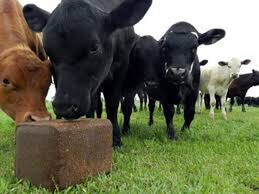by Roger Martyn
One of the observable differences between New Zealand and Australian pasture based production systems is the adoption of inline water mineral delivery systems. These are now very common in New Zealand situations, for the introduction of different medications into stock water supply.
Applications vary from trace element mineral mixes to the likes of bloat oils. While many Australian farmers do likewise, especially in extensive pastoral situations for treatment of trace element deficiencies where supplementation via fertilisers is impossible. More intensive farming operations often supplement stock with minerals by incorporating them with feed supplements such as grain rations.
The New Zealand experience has shown that introduction via water supply in conjunction with the use of balanced fertilisers ( ie fertilisers that are supplemented with minor and trace elements) achieves the best results by far. The reasons for this are quite clear.
Introduction of minerals via the stock water supply ensures all classes of stock get benefit from the medication , particularly the young and replacement stock that will often miss out otherwise.
Minerals and medications delivered via stock water supply target the animal every time it drinks, not just when it has access to a mineral lick or mineralised feed supplement. This facilitates a little and often approach to mineral nutrition which is known to be the most effective.
Introduction of minerals and medication via drinking water get to 'wash' the whole of the rumen contents, ensuring to micro flora within the rumen benefit as well as the ruminant itself. Remember that in a very real sense, a ruminant is an animal that 'surrounds' a vat of microbes (its rumen) for which its nutrition is completely dependent on
The water supply is a very convenient transport / conveyance system for minerals/medications. It is available on demand, 24 /7 and is normally reticulated to every farm area stock will be grazing.
Adding of further minerals and/ or altering administration rates is much easier with water dosing systems than most others. The ability to change and alter rates can be very important, for example in instances when rapid changes in the weather occur. It has been shown for example, that high producing dairy cows when subject to extremes of heat or cold weather benefit greatly from significantly increased amounts of salt and trace elements compared to more temperate weather conditions. An automated water dosing system can readily cope with such changes to ensure animals receive the extra requirements, while also compensating for increased water intakes when hot and decreased water intakes when cold.
Uptake of minerals and medications via blocks and licks tend to vary greatly according to individual animal preferences often resulting in the deficiency or excess of actual individual requirements. By contrast, water intake is far more consistent between individual animals and since higher producers and larger animals consume proportionally more water anyway, their increased mineral requirements are accordingly met. This makes the administration of minerals and medications via stock drinking water a much better option.
Administration via water can be readily automated thereby minimising labour requirements; something that other methods of administration struggle with. Automation capability via water dosers extends to monitoring of intakes and automatic adjustment of dosing rates.
Administration via water is a 'little and often' form of medication, which invariably gets by far the best outcomes when compared to periodic administrations via animal injections, drenches, addition to supplementary feeds and even to slow release 'needles' and 'boluses' methods.


